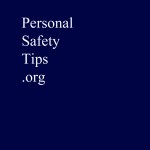Fire Safety for the home would include fire drills and fire safety training for kids. This article will hopefully give you some safety tips that will keep you and your family prepared in case of a fire in your home.
The Centers for Disease Control and Prevention reports that someone dies in a fire every 169 minutes and someone is injured every 30 minutes. It stated that 85% of all fire deaths in 2009 occurred in the home. In 2010, fire departments responded to 384,000 home fires in the U.S., with 2,640 people killed and 13,350 people injured.
Some of the facts about fire related deaths are:
Deaths do not usually occur directly from the fire, but from inhaling smoke, superheated air or toxic fumes generated by the flames.
Fire travel very quickly approximately 19 feet per second.
Most fire occur between 11pm and 6am.
Let’s look at some tips to keep you and your family safe. One of the most important tool in keeping you safe from fire and smoke is the smoke detector. It is relatively inexpensive and yet very valuable. The key to the smoke detector is checking the unit twice a year to sure it is still functioning. There is a test button on the detector, push it and the alarm should sound. If the alarm does not go off, the batteries are most probably dead. It is often a good idea to change the batteries at that time or every six months.
The detector should be located just outside the bedrooms near the ceiling. Smoke from the fire will usually rise to the ceiling first. I have been in one burning home while working on the police department and witnessed the flames rolling against the ceiling. It is something that I wouldn’t want to witness again.
In the case of a fire:
Stay low to the floor. Toxic fumes and smoke will rise and the fresher air will be closer to the floor.
When approaching a door, touch the door to see if it is hot to the touch. If it is, find another escape route.
If the alarm is sounded you should have a fire drill plan in place and it should be practiced on a regular basis. The plan can be as detailed as having a diagram of the house and the rooms, or simply talking about the escape plan, though not as good, it is better than nothing. You should determine at least two exits from every room in the house. This plan should also direct everyone in the family to a meeting place to gather after they get out of the house. This way you can determine if everyone has gotten out of the house. If someone is missing, you can tell the fire department personnel and give them a description of the missing person. The plan should be practiced both during the daylight hours and at night.
For additional information on home fires visit the Centers for Disease Control and Prevention and FEMA U.S. Fire Administration A fire safety checklist is located at the National Fire Protection Association
Hopefully, these fire safety tips will help you and your family prepare for a home fire. Safety at home is up to you.


